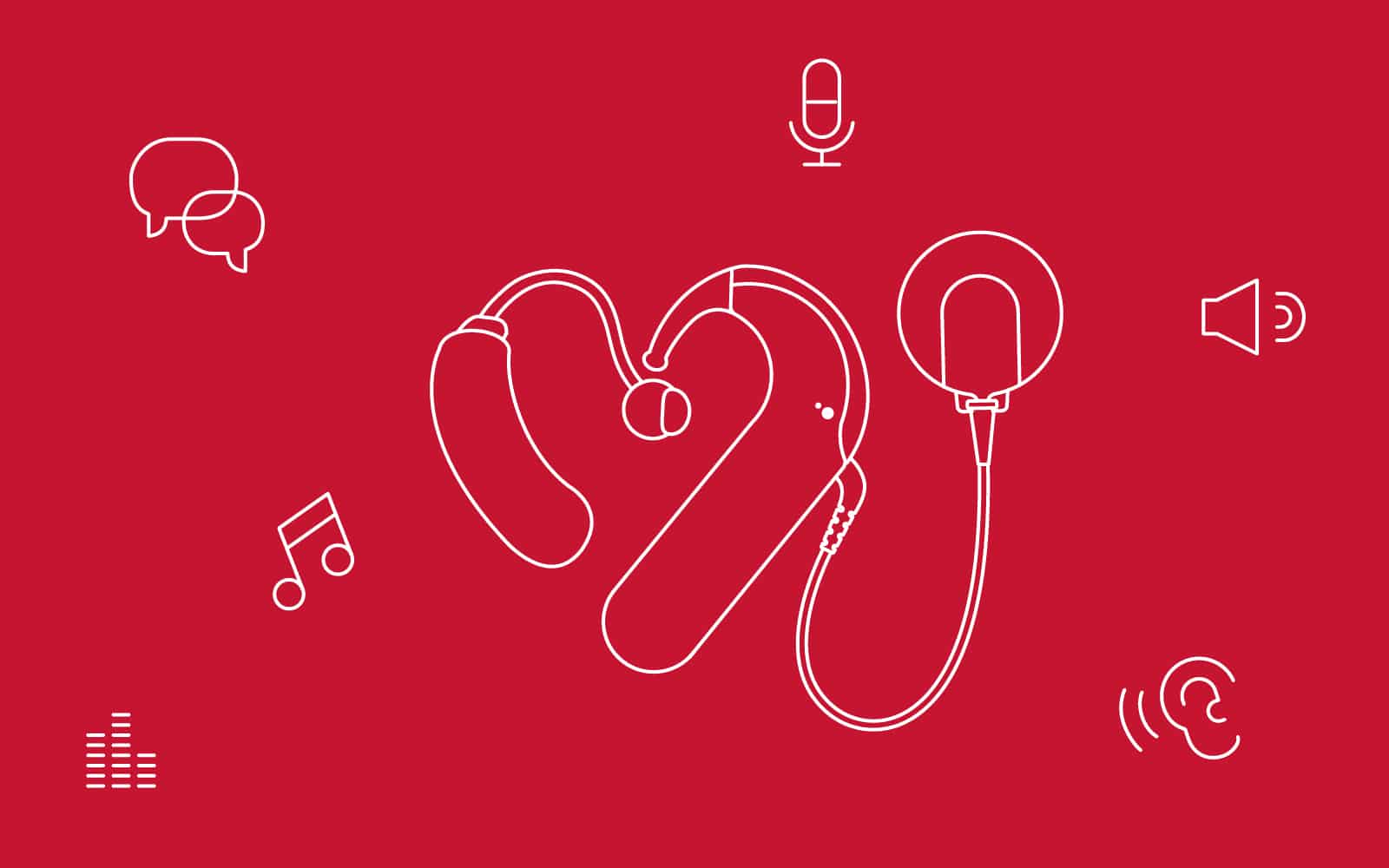
Deepthi Mahadevappa
Published May 08, 2024
A Guide to Unlocking Success in Bimodal Users
For some people with bilateral hearing loss, a hearing aid may provide enough amplification for one ear, but a cochlear implant may be appropriate for more severe hearing loss in the other ear. Aural rehabilitation can help these users get the most out of both hearing devices.

Rehabilitation for bimodal hearing device users with a cochlear implant (CI) for one ear and a hearing aid (HA) for the other ear requires a thoughtful and strategic approach. To achieve success on this journey, there are some important considerations to keep in mind:
Develop a Schedule for Device Wear
When introducing a new skill to a bimodal user, you may want to have your patient use both devices at first and then spend part of the session practicing the skill using only their cochlear implant. This will help them get used to their new cochlear implant and also learn how to integrate the information received from both devices.
Although auditory training sessions should sometimes focus on cochlear implant training alone, the primary goal should be enhancing bilateral integration. Therefore, some rehabilitation should involve simultaneous use of both the cochlear implant and the hearing aid.
Make the Most of Hearing With Both Ears
Improving sound localization and speech understanding in noise are important parts of bimodal rehabilitation. By developing these two skills, bimodal users will receive the best binaural benefit. Firszt, J. B., Reeder, R. M., & Skinner, M. W. (2008). Restoring hearing symmetry with two cochlear implants or one cochlear implant and a contralateral hearing aid. Journal of rehabilitation research and development, 45(5), 749–767. https://doi.org/10.1682/jrrd.2007.08.0120[1]Nyirjesy, S., Rodman, C., Tamati, T. N., & Moberly, A. C. (2020). Are There Real-world Benefits to Bimodal Listening? Otology & neurotology: official publication of the American Otological Society, American Neurotology Society [and] European Academy of Otology and Neurotology, 41(9), e1111–e1117. https://doi.org/10.1097/MAO.0000000000002767[2]
Speech understanding in noise training should progress from the easiest to the most difficult. Start with constant noise, non-speech, and higher signal-to-noise ratio. Then you can move on to variable speech.
If a bimodal user is having problems with sound localization, it could be because the timing of their devices is off. You can adjust pitch perception, loudness growth, and timing of a sound in MAESTRO for their RONDO 3 or SONNET 2 to provide them with a closer to natural match.
Monitor Progress to Recognize Successes
In the quest for success, monitoring progress is paramount. Evaluate the performance of both ears regularly to gain insight into your patient’s auditory skills with each device.
The goal is to integrate information from both ears. Patients who had two hearing aids before receiving a cochlear implant will already know how to process sound from their hearing aid. However, hearing with their cochlear implant will come with a learning curve.
Progress with a cochlear implant varies from person to person depending on a range of factors. Some of these factors include cochlear implant wearing time, hearing history, degree of hearing loss, and duration of deafness.
Inform your patients about these factors to help them understand their progress and keep them motivated. Setting realistic expectations and receiving reassurance from their clinician as well as their loved ones will help patients benefit greatly from auditory rehabilitation.
Educate the Families of Recipients
Empower recipients and their families with information about how to improve listening environments. And inform them about communication strategies they can use to make listening and understanding easier, even in difficult listening environments.
Since effective rehabilitation training is key to improving listening abilities, let families of recipients know how they can help their loved one practice auditory rehabilitation at home and in their daily routines.
Schedule Ongoing Expectations Counseling
To ensure cochlear implant recipients continue to make progress and achieve their hearing goals with the help of aural rehabilitation, ongoing expectations counseling is necessary.
Identify and discuss factors that have been playing a role in the patient’s hearing outcomes, and look for ways to improve future outcomes.
It is important to align the rehabilitation plan you have for your patient with their goals. Actively listen to their perspectives, and maintain a physical record of your discussions to refer to in the future.
Listening training for the cochlear implant alone as well as training for simultaneous use of both hearing devices will help your bimodal patients achieve binaural hearing success. Incorporating sound localization exercises and speech in noise exercises and following general good practices for aural rehabilitation will enable your patients to make progress along their hearing journeys.
Subscribe to our Professionals Blog to be notified by email about our latest blog articles.
Want to learn more about bimodal hearing? Take a look at these helpful resources:
- Find out more about bimodal hearing with MED-EL.
- With your myMED-EL account, learn about bimodal synchronization and coding strategies in MAESTRO.
- With your myMED-EL account, hear what experts have to say about optimizing bimodal fitting.
References
-
[1]
Firszt, J. B., Reeder, R. M., & Skinner, M. W. (2008). Restoring hearing symmetry with two cochlear implants or one cochlear implant and a contralateral hearing aid. Journal of rehabilitation research and development, 45(5), 749–767. https://doi.org/10.1682/jrrd.2007.08.0120
-
[2]
Nyirjesy, S., Rodman, C., Tamati, T. N., & Moberly, A. C. (2020). Are There Real-world Benefits to Bimodal Listening? Otology & neurotology: official publication of the American Otological Society, American Neurotology Society [and] European Academy of Otology and Neurotology, 41(9), e1111–e1117. https://doi.org/10.1097/MAO.0000000000002767
References

Deepthi Mahadevappa
Deepthi Mahadevappa (Ph.D.) is a speech language pathologist currently working as a rehabilitation manager at MED-EL headquarters in Innsbruck, Austria. Dr. Mahadevappa has many years of experience working in the field of hearing loss in clinical and educational settings. At present, she contributes to the development of digital rehabilitation tools and supports rehabilitation professionals globally.
Was this article helpful?
Thanks for your feedback.
Sign up for newsletter below for more.
Thanks for your feedback.
Please leave your message below.
CTA Form Success Message
Send us a message
Field is required
John Doe
Field is required
name@mail.com
Field is required
What do you think?
The content on this website is for general informational purposes only and should not be taken as medical advice. Please contact your doctor or hearing specialist to learn what type of hearing solution is suitable for your specific needs. Not all products, features, or indications shown are approved in all countries.
tatiana
October 17, 2024
I have a great appreciation of cochlear implants and the application of hearing and speech analysis. The fundamental understanding we have of speech and language changed significantly because of impantion of hearing devices! I can not thank people enough for sharing these graphics and videos to understand how the inner ear works.

Deepthi Mahadevappa
Deepthi Mahadevappa (Ph.D.) is a speech language pathologist currently working as a rehabilitation manager at MED-EL headquarters in Innsbruck, Austria. Dr. Mahadevappa has many years of experience working in the field of hearing loss in clinical and educational settings. At present, she contributes to the development of digital rehabilitation tools and supports rehabilitation professionals globally.

Deepthi Mahadevappa
Deepthi Mahadevappa (Ph.D.) is a speech language pathologist currently working as a rehabilitation manager at MED-EL headquarters in Innsbruck, Austria. Dr. Mahadevappa has many years of experience working in the field of hearing loss in clinical and educational settings. At present, she contributes to the development of digital rehabilitation tools and supports rehabilitation professionals globally.




Conversation
1 Comment